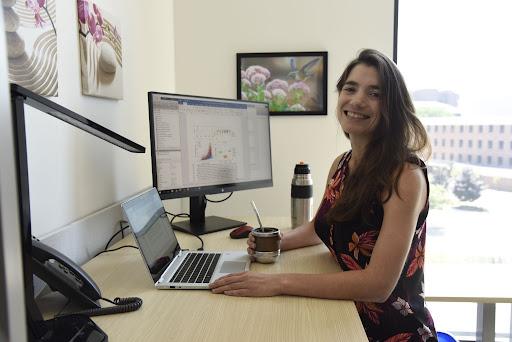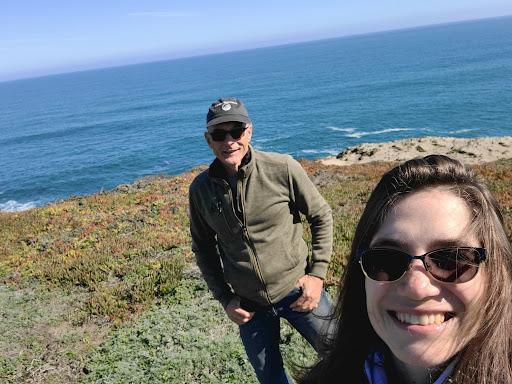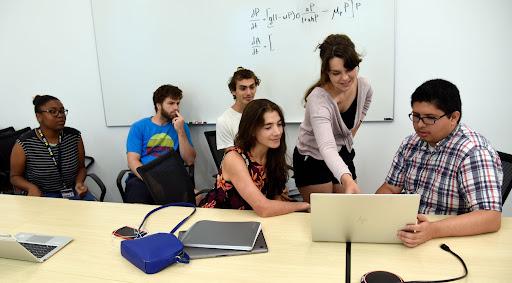
Uncovering the Ecological Network in Bodega Bay
Stepping out onto the rocky shore of Bodega Bay, you would quickly notice that the intertidal zone is teeming with life. From mussels and barnacles to crabs and anemones, hundreds of species occupy these rocky areas - experts Jackie Sones and Dr. Eric Sanford estimate that there are about 250 different species that make their homes in this rocky intertidal zone in Bodega Bay! Although we know a little bit about the interactions that occur between these species, we have yet to learn how all of these species are connected with each other; that is, we have yet to discover the ecological network.
An ecological network is a tool that represents the interactions that occur between species in a community, with a focus on predator-prey relationships (who-eats-who). Dr. Fernanda Valdovinos, an Assistant Professor at UC Davis within the department of Environmental Science and Policy, is setting out to uncover the ecological network of the rocky intertidal ecosystem in Bodega Bay.

Modelling Communities From the Shores of Chile to Bodega Bay
Dr. Valdovinos began her work with ecological networks and modelling as an undergraduate at the University of Chile, where she fell in love with math and all of its applications to ecology. She then went on to earn her PhD at the University of Chile with a lab that was focused on theoretical ecology and modelling, and while she was there she got the idea for a project to model the dynamics of the food web on the Chilean rocky intertidal, which is very similar oceanographically to the rocky intertidal at Bodega Bay. Although Dr. Valdovinos did not have a chance to complete this project during her PhD, she was able to later co-advise a student who completed the project in Chile!
Once she arrived in her faculty position at UC Davis, Dr. Valdovinos realized that there has never been an ecological network or food web created for the rocky intertidal community at the Bodega Marine Laboratory (BML); so, she set out to create one. This project will be a year-long collaborative effort involving multiple PhD students at UC Davis and the University of Michigan, along with paid undergraduates and junior specialists.
Building the Network

Building an ecological network involving 250 species is no small feat; Dr. Valdovinos describes the three steps involved in creating the network:
Step one involves creating a bare-bones picture of the relationships between the different species - that is, figuring out who eats whom and linking those relationships together in a diagram. Although this sounds simple, this step involves hours of research in the literature and with experts to figure out the predatory relationships between these hundreds of species! This will be done using a binary system; either a species eats another species, or it doesn’t. However, this step is no small feat and is where much of the time on this project may be spent researching.
Step two involves adapting food web mathematical models to this food web network at BML to provide additional information about the frequency at which a species may eat other species. This frequency is calculated based on the characteristics of the species; for example, Dr. Valdovinos and her team will be using an allometric trophic network model in which they use the organisms’ body size as a proxy for how often they may eat other species. This step provides more detailed information about the ecological network to provide a more accurate picture of what is occurring in the rocky intertidal community.
Step three takes the ecological network created in the first two steps and incorporates oceanographic factors into it for even greater accuracy in the model. The first two steps take into account only biotic factors, whereas this third step incorporates abiotic factors such as ocean currents, temperature, ocean acidity and more. This step will be done in collaboration with Dr. John Largier at BML, whose lab specializes in oceanography.

What Can We Learn From Ecological Networks?
Ecological modelling work, such as the projects undertaken by Dr. Valdovinos, are extremely important in helping us understand and predict how ecological communities will respond to anthropogenic impacts. These models are important because they embrace the complexities of ecological systems; species do not exist alone, they exist in the context of a community and an ecosystem. Because of this, it is important to incorporate these biotic and abiotic factors into the construction of models so that we can paint an accurate picture of the ecological functioning of the community as a whole, and use this accurate model to predict what effect certain actions may have on the community. For example, we can use these models to predict what may happen to the community as a whole if a group of species is adversely affected by climate effects such as ocean acidification. Once you have the theory and the model created, you can test many different scenarios in the computer and ask a multitude of questions that would otherwise take years of field research to uncover the answers to.
Interested in Getting Involved?
KEY TAKEAWAYS:
- Models help to understand and predict how ecological communities will respond to anthropogenic impacts.
- Understanding math allows you to create models that can analyze data and make predictions in ways that can’t be done via field research alone.
- Diversity in research is key to discovering more!
Dr. Valdovinos recommends that undergraduates who may be interested in research should start as early as possible in their search for research opportunities! Starting early allows them to gain experience and figure out not only what kinds of research they like, but also what kinds of research they don’t like, which is equally as valuable. Getting involved in research from an early time also provides valuable experience that can be advantageous in applying to graduate school or jobs later on. Dr. Valdovinos is excited to see a more diverse set of researchers entering the field of ecology and science; she believes that diversity is key to conducting sound science and finding innovative solutions to problems. The more diverse the set of worldviews and approaches to problems are, the more we get in terms of creativity and understanding!
About the Author:
Jenna Quan is a fourth-year undergraduate student majoring in evolution, ecology, and biodiversity and minoring in education. She has a passion for ecology and biology, especially in marine systems. Upon graduation, she hopes to pursue a PhD in ecology and continue on in academia. When Jenna is not working on research projects at BML or in a genetics lab, she is co-captaining the UC Davis Dance Team and working on her knitting projects!
